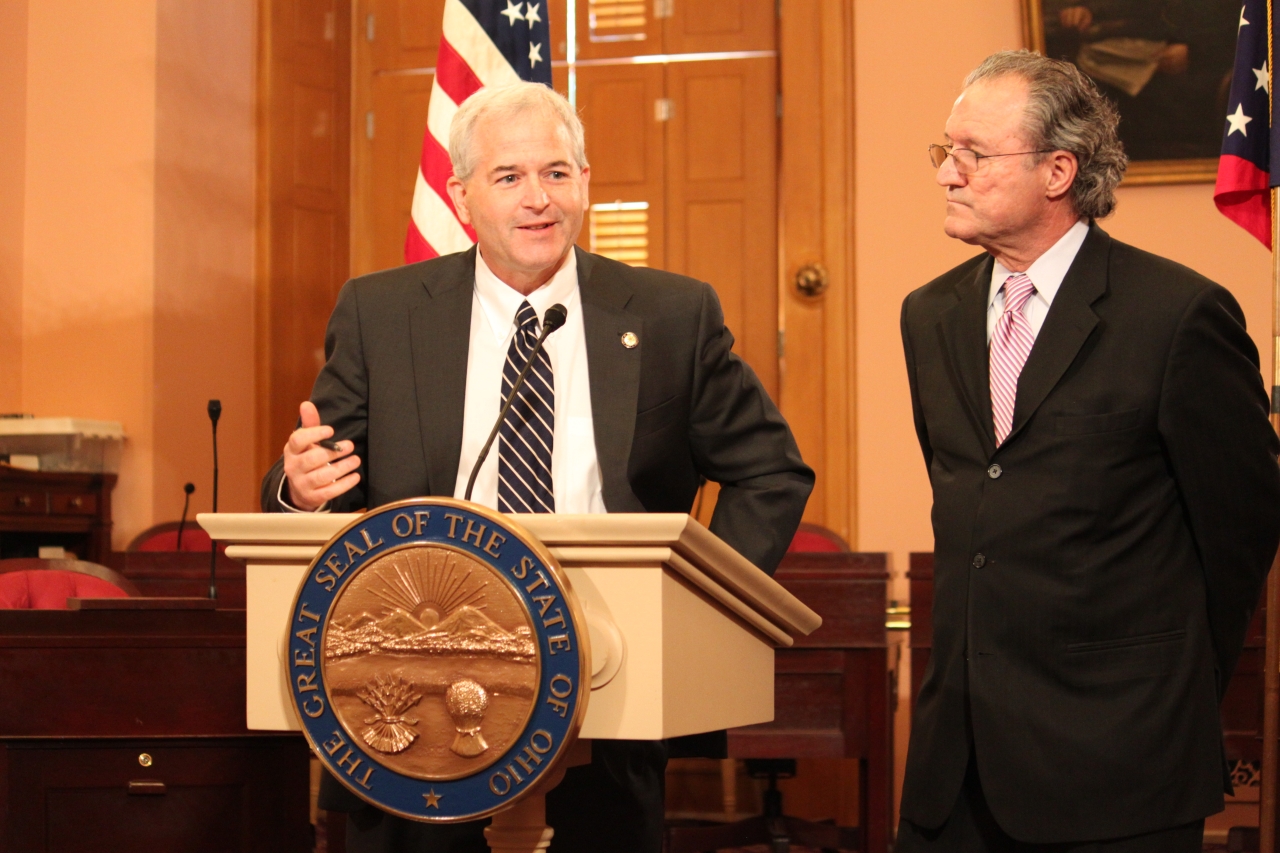Democratic News
Featured Stories
News Feed
YOUNGSTOWN, Ohio– After one month of denying any link existed between recent earthquakes in Poland Township and nearby fracking activity – and over two years after the first round of major earthquakes hit the Mahoning Valley – officials at the Ohio Department of Natural Resources finally acknowledged today that the state’s current permitting procedures for fracking are exceedingly lax.
Today, ODNR officials announced tougher permit conditions after finally admitting that the recent seismic events in Poland Township show a probable connection to fracking activity near a previously unknown microfault.
“We clearly have a situation where Kasich administration officials ignored repeated calls for greater safeguards against seismic activity caused by the fracking process,” said Rep. Hagan. “Instead of responding to my calls for action, ODNR and the Kasich Administration unfairly targeted me as an enemy of fracking, and even developed a plan to discredit my concerns. If they truly worked in a bipartisan, democratic way to address public health and safety concerns, our state wouldn’t be so slow to recognize these obvious shortfalls.”
An August 2013 memo from Ohio’s Department of Natural Resources was released that shows the regulatory agency working closely with big oil and gas companies and Gov. Kasich to identify, stifle and suppress groups and elected officials concerned with drilling in state parks. The document targets Democratic legislators and environmental watch groups as part of a strategy to marginalize public concern and advance oil and gas interests.
Over the past two general assemblies, Rep. Hagan has introduced nearly a dozen bills aimed at strengthening Ohio’s fracking regulations. Rep. Hagan’s legislation has been largely ignored by the Re
State Rep. Nickie J. Antonio (D-Lakewood) today on Wednesday in opposition to part of the state’s mid-biennium review, House Bill 483. Noting that the original intent of the MBR is to fix mistakes in last year’s state budget, Democrats offered several amendments that highlighted community needs and reversed previous harmful legislation.
State Rep. Ramos (D-Lorain) on Wednesday voted in opposition to part of the state’s mid-biennium review, House Bill 483. Democrats highlighted that, although the original intent of the MBR should have been to fix mistakes in last year’s state budget, the bill had turned into a thinly-veiled attempt by the GOP to abolish state protections against pay-to-play in state government.
State Representative Jack Cera (D-Bellaire), a member of the House Finance and Appropriations Committee assigned the task of vetting the state’s mid-biennium review proposals, was deeply disappointed with actions of the majority party during Tuesday’s hearing. In recent years, the budget review process has traditionally been a time to fix mistakes of the previous budget. However, this year, it was not the case.

State Reps. Mike Foley (D-Cleveland) and Robert F. Hagan (D-Youngstown) introduced legislation—House Bill 502 –today to increase Ohio’s minimum wage to $10.10 per hour from the current rate of $7.95 per hour. Workers who rely on tips to supplement income would see their wages rise from $3.98 to $5.05 per hour under the proposal.
The Democratic lawmakers say the increase will create a stronger Ohio by putting more money into the pockets of minimum wage workers while providing struggling families with an opportunity to lift themselves out of poverty.
“CEO pay has been increasing 127 times faster than employee pay over the last 30 years, and that disparity ultimately hurts our economy,” said Rep. Foley. “Ohio families just can’t get by on such paltry wages anymore. They are increasingly forced to rely on public assistance because they struggle to make ends meet even working two and three jobs.”
It is estimated that the proposed increase in Ohio wages would inject an additional $2.1 billion into the state’s economy and create close to 6,000 new jobs.
“Low-wage workers are older and more educated today than thirty years ago, and our state’s policies have yet to reflect this reality,” said Rep. Hagan. “This is money that will go directly back into our economy, not in some offshore account or overseas investment. Instead of being pushed into public assistance lines, Ohioans who play by the rules deserve a shot at making it in an economy that rewards hard work.”
Reports show that increasing the minimum wage to $10.10 an hour would have positive outcomes for Ohioans from all different backgrounds; of those who would be affected:
- 56% are women;
- 86% are over the age of 20;
- 60% live in households that make less than $50,000 a year. 50% live in households that make less than $40,000 a year;
- 23% of Ohio&r

As Ohio marks Sunshine week, GOP inaction in the state legislature means that Ohioans remain in the dark on how some of the state’s largest corporations are propping up employee benefits at taxpayers’ expense.
According to a state-issued June 2009 report, some of the largest and most profitable corporations in Ohio were also among the top ten biggest users of taxpayer-funded public assistance. For example, as Ohio’s largest private employer, Walmart has roughly 50,000 employees. Of those, between ten and fifteen thousand workers must rely on Medicaid for their healthcare. While just one example, the numbers from the top offenders are tragically routine.
Each month, some of the most profitable companies in Ohio leave it to the taxpayer to fill in the gaps left by their corporate neglect, with tens of thousands of their workers relying on Medicaid, food stamps and even cash assistance to make ends meet.
For too many years, my calls for transparency in spending taxpayer dollars have been ignored by Republicans who control state government. It seems they remain completely disinterested in helping illuminate how taxpayer dollars are being used to subsidize the health benefits of hard working Ohioans that are neglected by their employers. But, I will not stop—the public has a right to know.
This year, I again introduced legislation to shine a light on how we allocate taxpayer dollars to subsidize health benefits for employees of some of the largest corporations in Ohio.
Under House Bill 356, the director of Job and Family Services would be required to report the employers with the largest employee use of state public assistance, and provide that information to General Assembly, Director of JobsOhio, Director of Budget and Management and the Tax Credit Authority on an annual basis.
Having this information available will allow the legi







